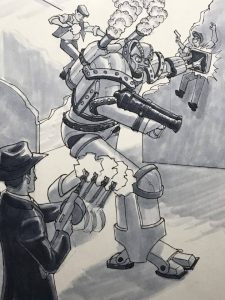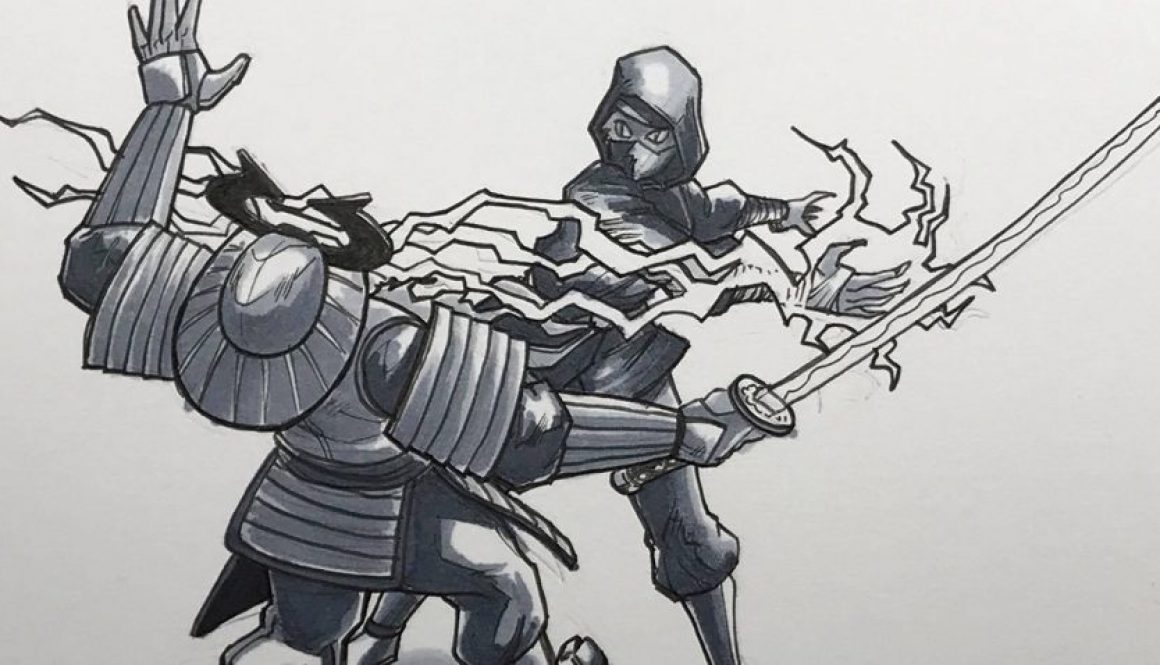Creating New Characters On The Fly
Our lives are surrounded by the intersecting stories of other characters. Sometimes those moments are no more than an accidental glance; others find two opponents face-to-face in battle. Without a balance of these fleeting and significant moments, we cannot grow.
Hi, everyone. I’m Todd Crapper, the creator and lead designer of the High Plains Samurai Roleplaying Game. I’d like to welcome you to this special section of the HPS website because this is the part where I’m really going to geek out about the game. Much of what you’ll find on this site further details the setting of the One Land inspiring you to create something really awesome for your stories. But this section, the Path to Enlightenment, is where I get into the mechanics.
Over the course of six years, I’ve run a lot of HPS games and watched this thing grow in my head and come alive at gaming tables around the world. Here, I’m going to teach you additional ways to utilize the game and maximize your characters and the method by which everyone contributes to the story. If you have any topic ideas or questions on playing HPS, send them to enlighten@highplainssamurai.com and I will answer you directly and/or use it for a future post.
So, let’s get started with something all Directors need to master if they’re planning on running a fast-paced game of HPS: instant character creation.
What Is Instant Character Creation?
In a heavily improvised game like High Plains Samurai, perhaps one of the greatest challenges for a Director is instant character creation. Unlike Writers, a Director is expected to create characters as they are introduced to the story and some of them become part of the action and roll dice. While there are guidelines in the High Plains Samurai Roleplaying Game core rulebook for creating major characters, supporting characters, and extras, there are some tips for whipping together ones in just a few minutes during a game that will endure long after their heads roll across the floor.
Character creation is a simple yet diverse series of stages. For the Writers, the depths their lead characters can acquire are rather impressive. Yet Directors do not have the liberty of making signatures for extras or even motivations and hindrances for supporting characters. These characters have to “pop” from the descriptions and come alive in the players’ minds. When done well, even a simple extra can suddenly become a daunting recurring villain that haunts the lead characters from behind the scenes. For example, my home group recently finished their rendition of the Black Scorpion storyline from High Plains Samurai: Legends and found themselves struggling to take out a catar ninja at the base of the watchtower. This fight soon spilled into the basement as one of the leads telekinetically caused the floor to collapse, and it became apparent this lone extra with no more than 3 Vitality was no simple goon without a name. So the Writers agreed she should escape and come back as a recurring villain for our Deadly Shadow. I’ve now adapted her into a supporting character with a couple of perks up her sleeve and even have plans to upgrade her into a major character so that her Vitality can grow and keep pace with our Shadow’s… a sign of a good recurring villain is their ability to stay one step ahead, after all.
Six Recommendations for Creating Memorable Instant Characters: The Clickbait Edition

What follows in this first instalment of the Path to Enlightenment series comes from nearly 100 characters created over the six years in which this game was in development. Some barely lasted a few minutes, others have gone on to become integral parts of an ongoing storyline. Most were extras, some were supporting characters. Many of them died a gruesome death.
(Remember, you can find a complete checklist for creating all four types of characters starting on page 134 of the core rulebook.)
- Use the Five Questions: These were intended for lead characters as guidelines for devising new potentials but that does not mean they are limited to the stories’ heroes. Choose one of the Five Questions to create potentials that hold up against the standards set by the lead characters.
- Make the First Potential a Quote: Whenever a new character suddenly appears in a description and it seems as if this character will mean something to the lead characters’ pursuits, it’s time to add pencil to paper. But what should that very first potential be? Whenever any player introduced a new character into the scene, what was the first aspect of their appearance/demeanor/abilities they provided? These can make for a good first potential as it incorporates what triggered their creation in the first place.
- Their Purpose Is Their Potential: Extras have only one potential and it can never start at higher than a d6. Considering their sole purpose (doing a poor job of trying not to get slaughtered by the lead characters), their one potential needs to cut straight to the chase because it is rare for extras for carry over into the next scene. Whatever it is they are there for in this scene, that is their potential.
- Dishing Out the Damage: If you intend to incorporate some risk and danger into the scene, give your extras’ resource a damage bonus instead. Even though they cannot shift, extras with those sharpened swords and smoking machine guns can whittle down the lead characters’ Vitality should they end up inflicting damage over any other complications. Not only that, the lead characters may be more inclined to shift the results in their favour to avoid damage in the first place. Writers tend to be less inclined to take damage from extras but could still end up shifting enough results that you whittle them down a couple extra Vitality nonetheless.
- A Resource You Can Rely On: If what you’re looking for is a chance for the leads to gain some Vitality after a fight rather than lose them, be sure to create a truly helpful resource for any Director-controlled characters and give it a step bonus. While supporting characters and extras never start with more than a d6 on any potential, a step bonus will bring any of them up to a d8 and put them on par with many “fresh out of the box” leads.
- Resources Bring Out Their Best Qualities: If you’re playing HPS, odds are good you’re an action film fan of some kind. And that means you can think of an awesome villain in a movie who never said a word, never had a name, but kicked ass because of a particular weapon, fighting style, or article of clothing that turned out to be useful in a fight. While there is little that can mechanically cause an extra or supporting character to stand out, their resources are as varied as your imagination.
The Right Amount of Vitality
When you create a major or supporting character, their starting Vitality will play a significant factor in their impact on the lead characters’ lives. So just what is the right starting amount? It depends on how long you want them to last in a fight scene against the total number of lead characters involved. 15 Vitality will allow them to go toe-to-toe against a single lead character and hold their own against a party of three for a couple of rounds. Anything more than that and the character will benefit from starting with a Vitality of 20 or more (see page 63 in the core rulebook for stronger characters). While supporting characters are certainly allowed to start with more than 20 Vitality, it is not recommended unless there is a reason for it in the story. For example, a stone golem guarding a lost temple in the Wastes could reasonably offer a significant challenge in a fight.
Duration is the key to determining a character’s starting Vitality. For every round you anticipate for that character to last in a fight scene, they should have 3 or 4 Vitality. This formula supposes an average group of 3-4 lead characters in the scene. Therefore, if you want the character to last at least 4 rounds, they should start with anywhere from 12 to 16 Vitality. If you feel more Vitality is the key to a “better” scene, consider making them a major character.
Here is the key to remember when it comes to extras and supporting characters: their Vitality simply determines how much of a beating they can take before they go down. Unlike major characters, these less significant figures in the One Land do not gain any additional benefits with more Vitality baked into them. Extras simply work in groups that can get bigger but with no mechanical benefit. A supporting character could start off with 20+ Vitality but all this does is stretch out the fight needlessly. Without the power to rise in strength like a major character, the Director risks creating a longer and drawn out scene that could have been sliced by one or two rounds.
As for major characters, a general rule is to have each one’s Vitality start out at half of the lead characters’ combined Vitality scores (at the time of their creation) with +2 Vitality for every permanent step bonus the lead characters placed on their potentials. For example, a group of 3 lead characters with a total of 54 Vitality and two permanent step bonuses to their potentials should find themselves staring down a major character with 31 Vitality (or rounded down to 30).

